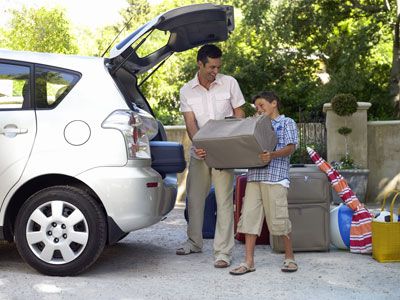The loading ramp is a real-world version of that old friend from high school science class, the inclined plane. Like that old friend, it makes lifting things easier. A loading ramp helps you move heavy objects from the ground into the bed of a trailer (or up a short flight of stairs or into the back of a truck or…well, use your imagination). Loading ramps are indispensable if you have something that needs to go into a trailer and it's too big to lift -- a large box, say, or an all-terrain vehicle. Loading ramps are readily available from towing supply stores, either assembled or as kits, and they usually come with everything you'll need to load your trailer safely, including chains or nylon safety straps to secure the ramp to safety hooks in the trailer. Many loading ramps are designed to fold when not in use, so that you can stow them efficiently in the back of a truck or tuck them out of the way in a garage.
Safety is a very important issue with loading ramps. If used right, they let you move objects safely into a trailer, but they also raise a few safety issues of their own. For instance, loading ramps can shift when heavy objects are placed on them and the spinning tires of a moving vehicle can even knock the loading ramp to the ground if it isn't secured properly. And when driving a vehicle up a loading ramp the vehicle can easily tip over, not only damaging the vehicle but injuring or even killing the driver. On the next page, we'll not only look at some of the things you can do with a loading ramp but at safe techniques for their use.
Advertisement


